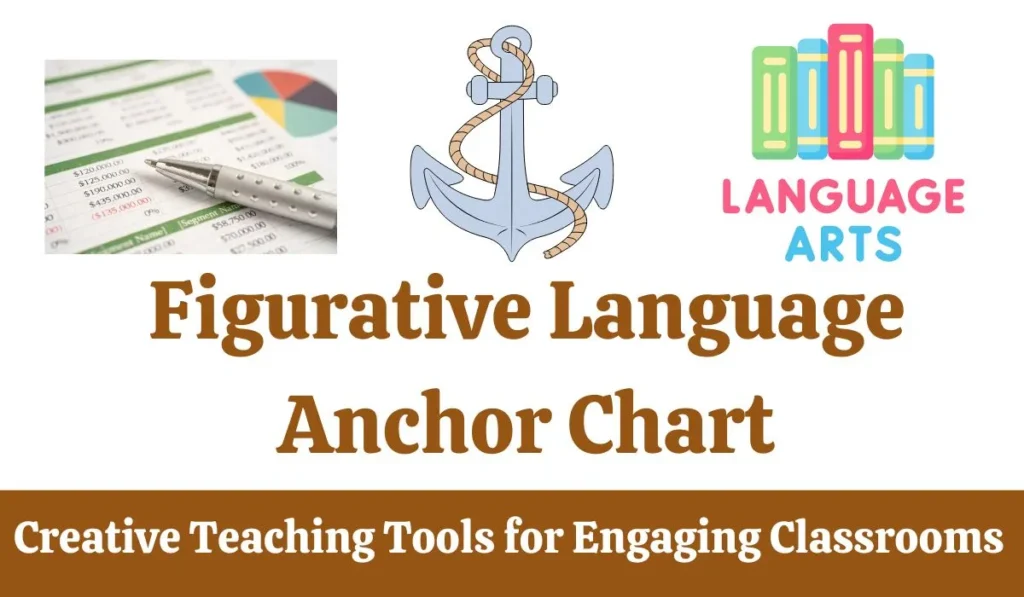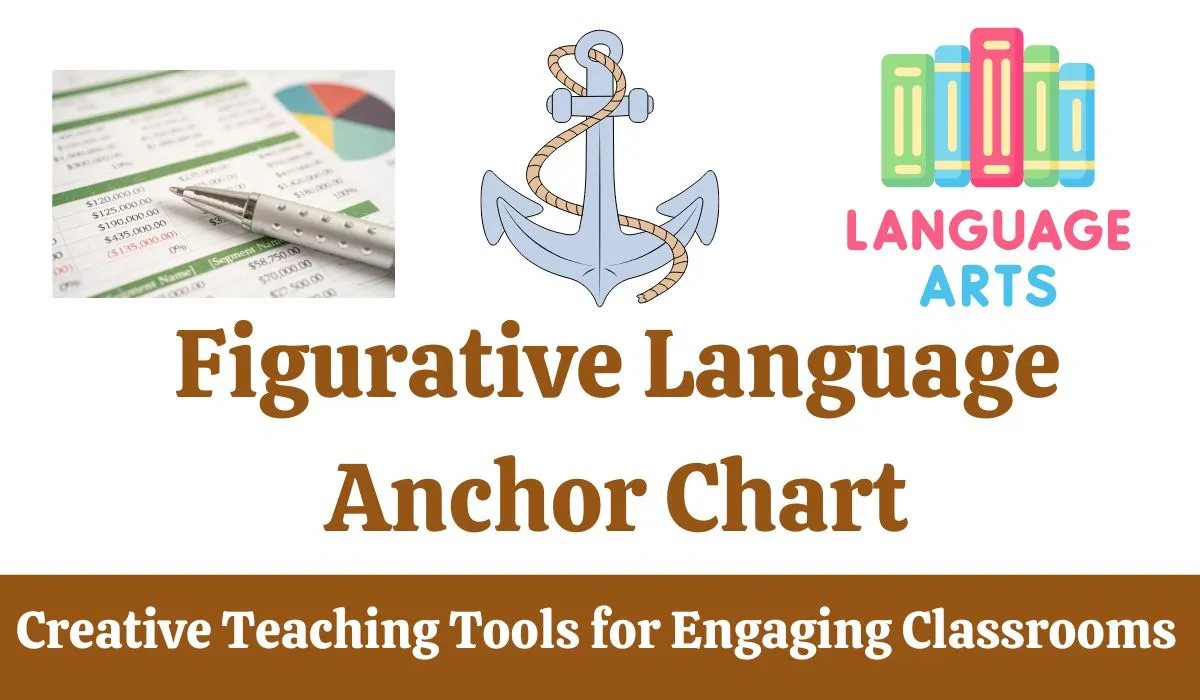
Figurative language is a cornerstone of effective communication and creative writing. It adds depth, imagery, and emotion to language, making it more engaging and relatable. However, teaching figurative language can be challenging, especially for younger students. This is where Figurative Language Anchor Charts come into play. These visual tools are designed to simplify complex concepts, making them accessible and memorable for students. In this guide, we’ll explore what figurative language anchor charts are, their benefits, how to design them, and creative ways to use them in the classroom.
What Are Figurative Language Anchor Charts?
Figurative language refers to using words or expressions that go beyond their literal meaning to create vivid imagery, evoke emotions, or convey complex ideas. Common types include similes, metaphors, personification, hyperbole, and idioms.
An anchor chart is a visual aid used in classrooms to reinforce learning. It typically includes key concepts, definitions, examples, and illustrations. When combined, figurative language anchor charts serve as a reference point for students, helping them understand and apply figurative language in their reading and writing.
Purpose and Benefits
- Simplify Complex Concepts: Break down abstract ideas into digestible parts.
- Visual Reinforcement: This appeals to visual learners and aids memory retention.
- Classroom Engagement: Encourages interactive learning and participation.
Benefits of Using Figurative Language Anchor Charts
Improved Memory Recall
Research shows that visual aids, such as anchor charts, significantly enhance memory retention. For example, metaphors and similes create mental images that help students recall information more effectively. A study by the Journal of Educational Psychology found that students who used visual aids scored 20% higher on memory tests compared to those who relied solely on text-based learning.
Enhanced Reading Comprehension
Figurative language anchor charts help students decode and interpret literary devices in texts. Studies indicate that students exposed to visual aids demonstrate a 15-25% improvement in reading comprehension. By providing clear examples and definitions, these charts empower students to analyze and appreciate the nuances of language.
Designing Your Figurative Language Anchor Chart
Creating an effective anchor chart requires careful planning and creativity. Here are some tips to get started:
Essential Elements
- Definitions: Clearly define each type of figurative language (e.g., simile, metaphor).
- Examples: Include relatable examples (e.g., “Her smile was as bright as the sun”).
- Visuals: Use illustrations or icons to represent concepts (e.g., a sun for brightness).
- Mnemonic Devices: Add catchy phrases or acronyms to aid memory (e.g., “SIMILE = Similar”).
Age-Appropriate Designs
- 2nd Grade: Use simple language, bright colors, and large fonts. Focus on basic concepts like similes and metaphors.
- 3rd-4th Grade: Introduce more complex devices like personification and hyperbole. Include student-generated examples.
- 5th Grade: Incorporate advanced concepts like idioms and allusions. Encourage critical thinking with open-ended questions.
Ways to Use Figurative Language Anchor Charts in the Classroom
Whole-Group Display
Hang the anchor chart in a prominent location where all students can see it. Use it during lessons to introduce or review concepts. For example, point to the chart while reading a story and ask students to identify examples of figurative language.
Small Group & Hands-On Activities
- Matching Games: Provide students with cards containing examples and definitions to match.
- Collaborative Charts: Have small groups create their mini anchor charts.
- Role-Playing: Act out idioms or metaphors to reinforce understanding.
Individual Student Copies
Provide students with personal copies of the anchor chart. They can keep these in their notebooks or folders for quick reference during independent work.
Creative Ideas & Additional Resources
Integrating Technology
- Canva: Use Canva’s templates to create digital anchor charts.
- Google Drawings: Collaborate with students to design charts online.
- Interactive Whiteboards: Display digital charts and allow students to annotate them.
Teacher Case Studies
- Ms. Johnson’s 3rd Grade Class: Students created their anchor charts using examples from their favorite books. This activity boosted engagement and comprehension.
- Mr. Lee’s 5th Grade Class: A digital anchor chart was used to analyze figurative language in pop songs, making the lesson relatable and fun.
Figurative language anchor chart with examples
An anchor chart is a visual tool that helps students understand and remember key concepts—in this case, various types of figurative language. Let’s explore some common types of figurative language along with their definitions and examples:
1. Simile
A simile compares two unlike things using the words “like” or “as.”
Example: “Her smile was as bright as the sun.”
2. Metaphor
A metaphor directly compares two unlike things by stating that one is the other.
Example: “Time is a thief stealing moments from our lives.”
3. Personification
Personification gives human characteristics to non-human objects or abstract ideas.
Example: “The wind whispered secrets through the trees.”
4. Hyperbole
Hyperbole involves exaggerated statements not meant to be taken literally.
Example: “I’m so hungry I could eat a horse.”
5. Onomatopoeia
Onomatopoeia uses words that imitate the sounds they describe.
Example: “The bees buzzed around the flowers.”
6. Alliteration
Alliteration is the repetition of the same initial consonant sound in a series of words.
Example: “Sally sells seashells by the seashore.”
7. Idiom
An idiom is a phrase or expression that has a figurative meaning different from its literal meaning.
Example: “It’s raining cats and dogs.”
Conclusion
Figurative language anchor charts are powerful tools that enhance memory, comprehension, and engagement in the classroom. By incorporating clear definitions, relatable examples, and creative visuals, teachers can make figurative language accessible and enjoyable for students of all ages.
FAQs
How can a figurative language anchor chart be used effectively in the classroom?
Optimal answer: Use it as a visual aid for introducing concepts sequentially, incorporating interactive activities, and reviewing regularly to reinforce learning.
What are the key elements to include in a figurative language anchor chart for 5th graders?
Optimal answer: Include clear definitions, relatable examples, engaging visuals, mnemonic devices, and interactive components tailored for their level.
How can I create a figurative language anchor chart that is accessible to all learners?
Optimal answer: Use clear, simple language, incorporate bold visuals and color coding, choose large readable fonts, and provide digital versions for assistive technologies.
